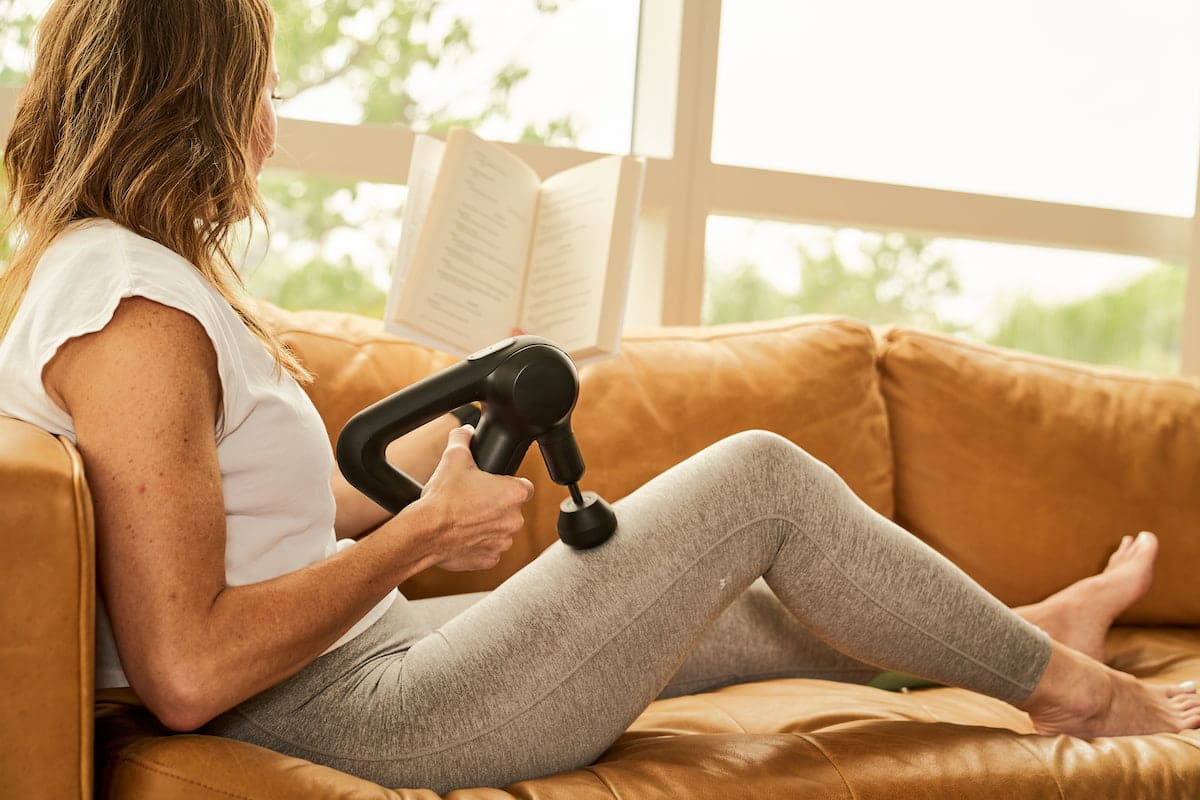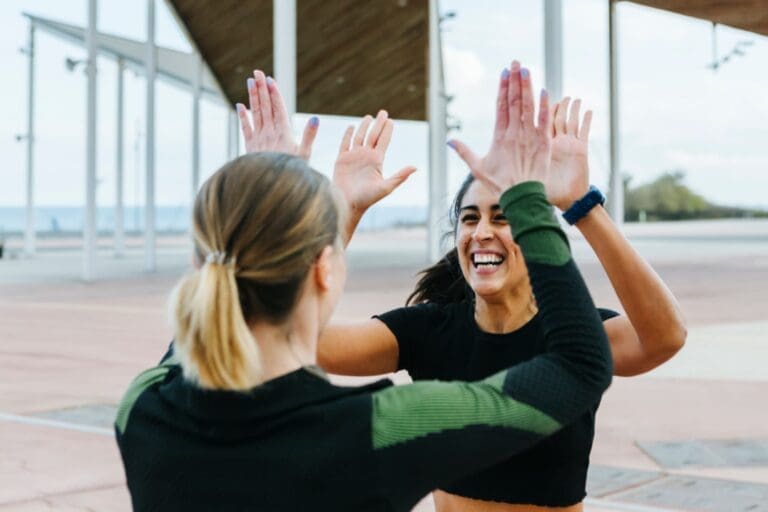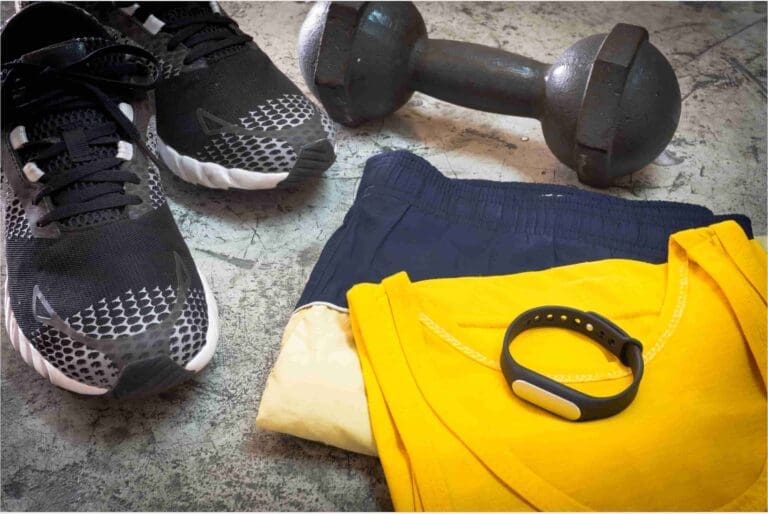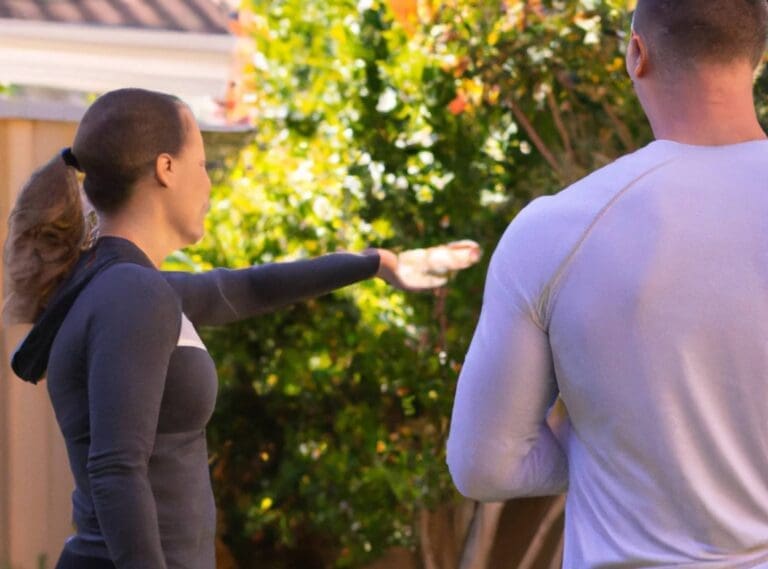Introduction: San Francisco’s Fitness Scene – A Runner’s Paradise
Hey there, fitness enthusiasts! Holly Roser here, your friendly neighborhood personal trainer from San Francisco. If you’re anything like me, you’re always on the lookout for the next big fitness challenge. Well, you’re in luck because San Francisco is a veritable playground for runners and fitness buffs of all stripes.
From the iconic Golden Gate Bridge to the winding streets of Chinatown, our beautiful city by the bay offers a smorgasbord of fitness events and races that’ll keep you on your toes (literally!) all year round. Whether you’re a seasoned marathoner or a couch-to-5K newbie, there’s something here for everyone.
In this ultimate guide, we’ll lace up our running shoes and take a deep dive into San Francisco’s most exciting fitness events and races. We’ll explore everything from heart-pumping hill climbs to scenic waterfront jogs, and I’ll share some insider tips to help you crush your fitness goals. So, grab your water bottle, and let’s hit the ground running!
The San Francisco Marathon: The Crown Jewel of Bay Area Races
A Race Like No Other
If there’s one event that stands head and shoulders above the rest, it’s the San Francisco Marathon. This isn’t just any old 26.2-mile jaunt – it’s a tour de force of the city’s most iconic landmarks and a true test of endurance.
Picture this: You’re crossing the Golden Gate Bridge as the morning fog lifts, revealing breathtaking views of the bay. You’re weaving through the colorful streets of Haight-Ashbury, channeling your inner flower child for that extra burst of energy. And just when you think you can’t take another step, you’re cruising past AT&T Park with the finish line in sight. It’s no wonder this race attracts runners from all over the globe!
Training for the Big Dance
Now, I won’t sugarcoat it – training for a marathon is no walk in the park. But with the right approach, you’ll be ready to tackle those infamous San Francisco hills come race day. Here’s a quick rundown of what you need to know:
- Hill training is your new best friend: Those inclines aren’t going to climb themselves! Incorporate hill repeats into your training regimen to build strength and endurance.
- Mix it up: Cross-training is key to preventing burnout and reducing injury risk. Try cycling or swimming on your rest days to keep your fitness levels up without pounding the pavement.
- Fuel smart: Proper nutrition is crucial for marathon success. Focus on complex carbs, lean proteins, and healthy fats to keep your engine running smoothly.
- Rest and recover: Don’t underestimate the power of a good night’s sleep and regular stretching. Your body will thank you on race day!
For more personalized marathon training tips, check out our consultation services at Holly Roser Fitness. We’ll help you create a tailored plan that fits your unique needs and goals.
Bay to Breakers: Where Fitness Meets Fabulous
A San Francisco Institution
If the marathon is San Francisco’s crown jewel, then Bay to Breakers is its wild and wacky cousin. This 12K race has been a city staple since 1912, and it’s as much a celebration of San Francisco’s quirky spirit as it is a fitness event.
Picture thousands of runners – some in serious racing gear, others dressed as superheroes, unicorns, or even famous landmarks – traversing the city from the bay to the breakers. It’s a spectacle that has to be seen to be believed!
Tips for Tackling Bay to Breakers
Whether you’re in it to win it or just along for the fun, here are some tips to make the most of your Bay to Breakers experience:
- Embrace the costume culture: Half the fun is dressing up, so don’t be afraid to let your freak flag fly! Just make sure your outfit doesn’t impede your running.
- Pace yourself: With all the excitement, it’s easy to start too fast. Remember, you’ve got 7.46 miles to cover!
- Hydrate, hydrate, hydrate: The weather can be unpredictable, so make sure you’re drinking enough water before, during, and after the race.
- Enjoy the after-party: The finish line festival at Ocean Beach is legendary. Stick around to celebrate your achievement and soak in the unique Bay to Breakers atmosphere.
The San Francisco Giant Race: Run Where Champions Play
Baseball Meets Running
For all you sports fans out there, the San Francisco Giant Race is a home run (pun absolutely intended). This event lets you channel your inner Buster Posey as you race through the streets of San Francisco, finishing on the field at Oracle Park.
With distances ranging from a 5K to a half marathon, there’s an option for every fitness level. Plus, you get some pretty sweet Giants-themed swag to show off your accomplishment.
Training for a Home Run
Whether you’re aiming for the 5K or going the full 13.1 miles, here are some tips to help you knock it out of the park:
- Build your base: Start with shorter runs and gradually increase your distance over time.
- Incorporate speed work: Mix in some intervals or tempo runs to improve your pace.
- Cross-train: Add some strength training to your routine to build overall fitness and reduce injury risk.
- Visualize success: Picture yourself crossing that finish line on the Giants’ home turf – it’s a powerful motivator!
The Escape from Alcatraz Triathlon: Not for the Faint of Heart
A True Test of Grit
If you’re looking for the ultimate fitness challenge, look no further than the Escape from Alcatraz Triathlon. This legendary event starts with a 1.5-mile swim from Alcatraz Island (yes, that Alcatraz), followed by an 18-mile bike ride and an 8-mile run through San Francisco’s punishing hills.
It’s not just a race – it’s an adventure that’ll push you to your limits and beyond. But trust me, the sense of accomplishment when you cross that finish line is worth every grueling moment.
Preparing for Your Great Escape
Taking on Alcatraz is no small feat, but with the right preparation, you can conquer this beast. Here’s what you need to focus on:
- Master open water swimming: The bay’s cold water and strong currents are a whole different ballgame from your local pool. Practice in open water whenever possible.
- Build your bike skills: Those San Francisco hills are no joke. Work on your climbing and descending techniques.
- Brick workouts are your friend: Combine bike and run sessions to get your body used to the transition.
- Mental toughness is key: Visualization and positive self-talk can make a huge difference when the going gets tough.
Remember, proper training is crucial for an event of this magnitude. If you’re considering taking on the Escape from Alcatraz, consider reaching out to us at hollyroser.com for specialized triathlon coaching.
The San Francisco Turkey Trot: Burn Before You Earn
A Thanksgiving Tradition
Who says you can’t have your pumpkin pie and eat it too? The San Francisco Turkey Trot is the perfect way to burn some calories before your Thanksgiving feast. This 5-mile run through Golden Gate Park has become a beloved holiday tradition for many Bay Area families.
Making the Most of Your Turkey Trot
Here are some tips to ensure your Turkey Trot is a gobbling good time:
- Bring the whole family: This event is perfect for runners of all ages and abilities.
- Dress for the occasion: Turkey costumes are encouraged! Just make sure you can still run comfortably.
- Don’t push too hard: Remember, this is about fun and family time. Save the PR attempts for another day.
- Enjoy the post-race festivities: Stick around for the costume contest and raffle – you might win some great prizes!
The San Francisco Hot Chocolate 15K/5K: Sweet Rewards for Your Efforts
A Race That’s Good Enough to Eat
If you’ve got a sweet tooth and a passion for running, the Hot Chocolate 15K/5K is your dream come true. This race takes you on a scenic tour of San Francisco, with the promise of rich, creamy hot chocolate waiting at the finish line.
Training Tips for a Chocolatey Challenge
Here’s how to prepare for this delicious event:
- Build your endurance: Whether you’re tackling the 5K or 15K, gradually increase your mileage in the weeks leading up to the race.
- Practice fueling: Experiment with different energy gels or chews during your training runs to find what works best for you.
- Dress in layers: San Francisco weather can be unpredictable, so be prepared for anything.
- Save room for chocolate: Trust me, you’ll want to fully enjoy that post-race treat!
The Benefits of Participating in Fitness Events
Now that we’ve covered some of San Francisco’s most exciting races, let’s talk about why participating in these events is so beneficial. It’s not just about the finisher’s medal (although those are pretty cool) – there are some serious perks to lacing up your shoes and joining the crowd.
Physical Health Benefits
It’s no secret that regular exercise is good for you, but did you know that training for and participating in races can take your fitness to the next level? According to a study published in the Journal of the American Heart Association, training for a marathon can significantly improve your cardiovascular health, even if you’re a first-time runner[1].
The study found that participants who trained for a marathon saw a reduction in arterial stiffness equivalent to a four-year reduction in vascular age. That’s like turning back the clock on your heart health!
Mental Health Boost
But the benefits aren’t just physical. Research has shown that regular exercise can have a profound impact on mental health. A study in the Lancet Psychiatry journal found that people who exercised had 43.2% fewer days of poor mental health compared to those who didn’t exercise[2].
And there’s something special about the collective energy of a race that can really lift your spirits. The sense of community, the shared goal, and the rush of endorphins combine to create a powerful mood boost that can last long after you’ve crossed the finish line.
Goal Setting and Achievement
Training for and completing a race is an excellent way to practice goal setting and experience the satisfaction of achievement. This skill can translate to other areas of your life, boosting your confidence and motivation.
A study in the Journal of Applied Sport Psychology found that goal setting in endurance sports was associated with improved performance and increased self-efficacy[3]. In other words, setting and achieving fitness goals can make you feel more capable and confident in all aspects of your life.
Community and Social Connection
One of the best things about fitness events is the sense of community they foster. Whether you’re training with a group or cheering each other on during the race, these events create opportunities for social connection that can be hard to find in our busy, often isolated lives.
Research has shown that social connection is crucial for both mental and physical health. A study in the Proceedings of the National Academy of Sciences found that strong social relationships increase odds of survival by 50%[4]. So, by participating in these events, you’re not just improving your fitness – you’re also building a supportive community that can contribute to your overall well-being.
Preparing for Your First Race: A Beginner’s Guide
If all this talk of races has you itching to sign up for your first event, that’s great! But if you’re new to the world of organized fitness events, it can feel a bit overwhelming. Don’t worry – I’ve got you covered with some tips to help you prepare for your first race.
Choose the Right Race
Start with a distance that feels challenging but achievable. For many beginners, a 5K (3.1 miles) is a great place to start. Once you’ve got a few of those under your belt, you can start thinking about longer distances.
Give Yourself Enough Time to Train
Don’t try to cram all your training into the week before the race. Depending on your current fitness level and the race distance, you might need anywhere from 8 to 16 weeks to prepare properly. Remember, slow and steady progress is the key to avoiding injury and building lasting fitness.
Invest in Proper Gear
You don’t need to break the bank, but a good pair of running shoes that fit well can make a world of difference. Consider visiting a specialty running store where they can analyze your gait and recommend the right shoes for you.
Follow a Training Plan
Having a structured plan can take the guesswork out of your training. There are plenty of free plans available online, or you can work with a personal trainer to create a customized plan. At Holly Roser Fitness, we specialize in creating tailored training plans for runners of all levels.
Practice Race Day Nutrition
Don’t wait until race day to figure out what to eat before and during your run. Practice your nutrition strategy during your training runs to avoid any unpleasant surprises on race day.
Embrace the Nerves
It’s normal to feel nervous before your first race. Remember, everyone around you was a first-timer at some point. Use those nerves as excitement and channel that energy into your performance.
The Role of Recovery in Your Fitness Journey
With all this talk about training and racing, it’s important not to overlook the crucial role that recovery plays in your fitness journey. In fact, proper recovery is just as important as the training itself when it comes to improving your performance and avoiding injury.
The Science of Recovery
When you exercise, especially at high intensities or for long durations, you create microscopic damage to your muscle fibers. This damage isn’t a bad thing – it’s actually what stimulates your body to adapt and become stronger. But for this adaptation to occur, your body needs time to repair and rebuild.
A study published in the Journal of Applied Physiology found that muscle protein synthesis (the process of building new muscle) can remain elevated for up to 24-48 hours after a workout[5]. This underscores the importance of giving your body adequate time to recover between intense training sessions.
Recovery Strategies
Here are some evidence-based strategies to optimize your recovery:
- Sleep: Aim for 7-9 hours of quality sleep each night. A study in the journal Sleep showed that getting enough sleep can significantly improve athletic performance[6].
- Nutrition: Refuel with a combination of carbohydrates and protein within 30 minutes after your workout. This can help jumpstart the recovery process.
- Active Recovery: Light activity on your rest days, like a gentle walk or yoga, can promote blood flow and help reduce muscle soreness.
- Hydration: Staying well-hydrated is crucial for recovery. Even mild dehydration can impair performance and slow down the recovery process.
- Massage or Foam Rolling: These techniques can help reduce muscle tension and improve flexibility. A study in the Journal of Athletic Training found that foam rolling can help reduce muscle soreness and improve range of motion[7].
Remember, recovery isn’t just about physical rest – mental recovery is important too. Make sure to incorporate activities that help you relax and de-stress as part of your overall training plan.
Conclusion: Your San Francisco Fitness Adventure Awaits
There you have it, folks – your ultimate guide to San Francisco’s fitness events and races. From the grueling climbs of the San Francisco Marathon to the whimsical costumes of Bay to Breakers, our city offers a smorgasbord of fitness challenges to suit every taste and ability level.
Remember, participating in these events isn’t just about crossing finish lines or collecting medals (although those are pretty sweet perks). It’s about pushing your limits, connecting with a vibrant community of like-minded individuals, and experiencing the unique charm of San Francisco in a whole new way.
Whether you’re a seasoned athlete looking to PR or a newcomer taking your first steps into the world of organized fitness events, there’s a place for you in San Francisco’s thriving fitness scene. So lace up those shoes, hit the streets, and start your own fitness adventure in the City by the Bay.
And hey, if you’re feeling a bit overwhelmed or unsure where to start, that’s where we come in. As a personal trainer based in the Bay Area, I’m passionate about helping people of all fitness levels achieve their goals. Whether you’re training for your first 5K or aiming to conquer the Escape from Alcatraz Triathlon, we’re here to support you every step of the way.
Call to Action
Ready to take your fitness journey to the next level? Visit hollyroser.com to learn more about our personalized training programs and how we can help you crush your fitness goals. Whether you’re a San Francisco local or just visiting, we’d love to be part of your fitness story. Let’s make those finish line dreams a reality together!
List of Research Studies Cited
- Karlsen, T., Aamot, I. L., Haykowsky, M., & Rognmo, Ø. (2018). High Intensity Interval Training for Maximizing Health Outcomes. Progress in Cardiovascular Diseases, 60(1), 67-77.
- Chekroud, S. R., Gueorguieva, R., Zheutlin, A. B., Paulus, M., Krumholz, H. M., Krystal, J. H., & Chekroud, A. M. (2018). Association between physical exercise and mental health in 1·2 million individuals in the USA between 2011 and 2015: a cross-sectional study. The Lancet Psychiatry, 5(9), 739-746.
- Weinberg, R., & Butt, J. (2014). Goal-setting and sport performance: Research findings and practical applications. In A. G. Papaioannou & D. Hackfort (Eds.), Routledge companion to sport and exercise psychology: Global perspectives and fundamental concepts (pp. 343-355). Routledge/Taylor & Francis Group.
- Holt-Lunstad, J., Smith, T. B., & Layton, J. B. (2010). Social relationships and mortality risk: a meta-analytic review. PLoS medicine, 7(7), e1000316.
- Burd, N. A., West, D. W., Moore, D. R., Atherton, P. J., Staples, A. W., Prior, T., … & Phillips, S. M. (2011). Enhanced amino acid sensitivity of myofibrillar protein synthesis persists for up to 24 h after resistance exercise in young men. The Journal of nutrition, 141(4), 568-573.
- Mah, C. D., Mah, K. E., Kezirian, E. J., & Dement, W. C. (2011). The effects of sleep extension on the athletic performance of collegiate basketball players. Sleep, 34(7), 943-950.
- Macdonald, G. Z., Button, D. C., Drinkwater, E. J., & Behm, D. G. (2014). Foam rolling as a recovery tool after an intense bout of physical activity. Medicine & Science in Sports & Exercise, 46(1), 131-142.




![Finding Time to Exercise as a Working Mom [7 Proven Tips] 4 Finding Time to Exercise as a Working Mom [7 Proven Tips]](https://www.hollyroser.com/wp-content/uploads/2021/03/finding-time-to-exercise-as-a-working-mom-7-proven-tips-tips-from-holly-roser-fitness-768x510.jpg)




